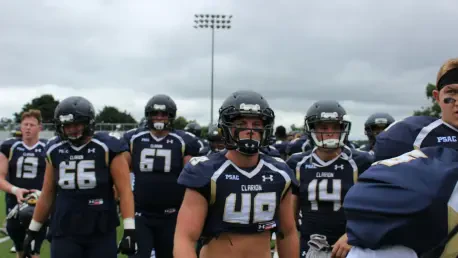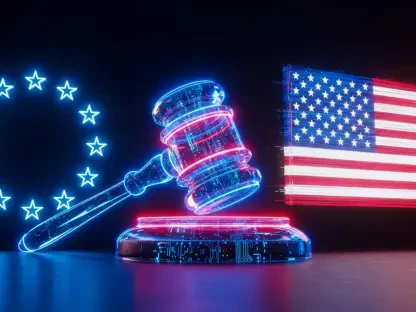The landscape of college sports in the United States is undergoing a dramatic transformation, fueled by a series of legal challenges targeting the NCAA’s regulatory authority. At the heart of this upheaval is the tension between the longstanding model of amateurism in collegiate athletics and the pressures of commercialization that have intensified over the years. The pivotal 2021 Supreme Court ruling in Alston v. NCAA marked a turning point by striking down the NCAA’s restrictions on education-related benefits. This decision opened opportunities for student-athletes to negotiate profitable name, image, and likeness (NIL) agreements, thereby reshaping the economic dynamics within college sports. As these changes unfold, the NCAA faces calls for federal intervention to establish antitrust protections that could influence the balance between maintaining amateurism and embracing a professional sports framework.
Striking a Balance Between Amateurism and Commercialization
As the NCAA navigates through a series of antitrust lawsuits, a major concern is whether it can maintain a level playing field in collegiate athletics without transforming into a professional sports league. The organization argues that congressional action is critical; without some measure of antitrust exemption, college sports may drift towards excessive commercialization, undermining the essence of amateurism. This perspective underscores a fear that, without legislative support, the financial structuring of college sports might resemble that of professional teams, leading to disparities in competition, recruitment, and opportunity for smaller institutions.
This legal crisis raises significant questions about the NCAA’s ability to effectively regulate and support college athletics while maintaining fairness. Legislators deliberating over these issues must weigh the cultural and educational value that amateur sports bring against the economic rights of student-athletes. Advocates for athletes argue that the NCAA has historically emphasized profit over athlete welfare, casting doubt on whether antitrust protection would truly align with student interests. This debate has sparked broader discussions about equitable compensation and control, as well as the need for transparent frameworks that address the realities of modern college athletics in the United States.
The Future Landscape of College Sports
The outcomes of ongoing legal battles have the potential to redefine how collegiate sports operate in the coming years. For universities and student-athletes alike, the stakes are immense. High-profile college athletes often find themselves at the center of multimillion-dollar endorsement deals, emphasizing a shift towards individualized economic autonomy. This new commercial reality poses questions regarding recruitment equity and institutional priorities; wealthier programs might gain competitive advantages, tilting the scales in their favor and challenging long-standing educational commitments.
As the college sports ecosystem evolves, intrinsic challenges continue to surface, demanding innovative solutions that balance traditional values with modern economic and regulatory demands. Educational institutions must adapt to an environment where athletes possess significant bargaining power, requiring a strategic approach to recruitment and resource allocation. Ensuring the fair treatment of student-athletes while preserving competitive integrity remains a delicate task. This ongoing recalibration highlights deeper societal shifts towards valuing individual economic rights, a theme likely to resonate beyond the realm of sports and into broader conversations about labor, fairness, and institutional power.
Navigating a Pivotal Moment
Currently, the tension between preserving amateur ideals and embracing the realities of a billion-dollar industry unfolds against a backdrop of increased autonomy and commercialization. Some stakeholders in collegiate sports see this period as a pivotal juncture in redefining how college athletics will function and who will benefit. The potential legislative actions that could grant the NCAA certain protections also invite skepticism; if unchecked, they might perpetuate existing inequalities, limiting student-athlete empowerment. Conversely, advocates assert that comprehensive reforms emphasizing transparency and equity could foster a more inclusive model, enhancing both student experiences and institutional alignment with educational objectives.
As the discourse surrounding college sports evolves in response to legal and social developments, the possibility for substantial regulatory overhaul becomes ever more pronounced. Balancing sport integrity with athlete welfare, institutions face challenges and opportunities alike. The path forward involves a careful re-examination of established norms, seeking a harmonious blend that respects tradition while acknowledging modern athlete rights and expectations. This moment marks a clear transition phase, setting the stage for dialogues that promise to redefine how NCAA-led college athletics align with 21st-century priorities.
Conclusion: Charting the Path Forward
As the NCAA faces several antitrust lawsuits, a pressing issue is whether it can uphold fair competition in college sports without morphing into a professional league. The organization believes congressional intervention is essential; lacking some antitrust immunity might propel collegiate sports toward rampant commercialization, eroding the amateur essence. This stance highlights concerns that without legislative backing, college sports’ financial model could mirror that of professional ones, impacting competition, recruitment, and opportunities for smaller schools.
The legal turmoil prompts key questions about the NCAA’s capacity to regulate and support college athletics fairly. Lawmakers need to balance the cultural and educational merits of amateur sports with student-athletes’ economic rights. Athlete advocates claim the NCAA often prioritizes profits over welfare, questioning if antitrust immunity truly serves student interests. This debate spurs broader dialogues on fair compensation and oversight, emphasizing the necessity for transparent solutions that consider today’s collegiate athletic landscape in the U.S.









